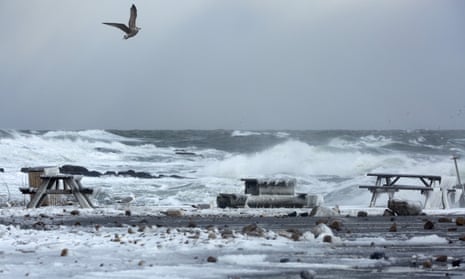A series of minor tremors recorded on the Danish Baltic island of Bornholm has puzzled scientists, who now say they were caused by “acoustic pressure waves from an unknown source”.
At first the tremors on Saturday were thought to have been caused by earthquakes. Then, seismologists theorised they originated from controlled explosions in Poland, more than 90 miles (140km) to the south.
On Monday, the Geological Survey of Denmark and Greenland (Geus), an official body that monitors the underground, said the tremors were “not caused by earthquakes, but by pressure waves from an event in the atmosphere”. However, they came from “an unknown source”.
“The seismologists can report that it is unlikely that the tremors originate from a controlled explosion in Poland, which was carried out shortly before the first reports of tremors on Bornholm,” Geus said.
On Saturday, Geus said it had received “more than 60” tips from people on Bornholm that “earthquake-like tremors” – described as a deep rumbling, shaking and rattling, changing pressure in the ear – had been reported in the afternoon on Bornholm.
No one was hurt. Police said they were contacted by members of the public about the tremor on the eastern part of the island. Danish media reported that the tremors caused a crack in the wall of a house.
Geus said seismic tremors were measured at a magnitude of 2.3.
Polish authorities said that there was intensive activity during the Anakonda23 exercise in Ustka, northern Poland, involving jet fighters and live firing of artillery munitions.
Geus, an independent research and advisory institution within Denmark’s ministry of climate, energy and utilities, said it had two seismographs on Bornholm that collected data around the clock.
Bornholm, home to nearly 40,000 people, is a rocky island in the Baltic Sea, south of Sweden, north-east of Germany and north of Poland.
